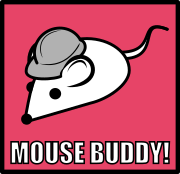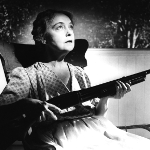|
Fangz posted:IIRC it also led to interesting roll properties that good pilots could make use of in dogfighting. Imma give that one a "maybe" (disclaimer: neither pilot nor historian) https://www.baesystems.com/en/heritage/sopwith-camel https://science.howstuffworks.com/sopwith-camel-f1.htm https://www.flyingmag.com/technicalities-why-left/ The impression I get from those is that despite what Biggles thought, the reason it turned so sharply was that it was short-coupled (everything as close to the center of gravity as possible): That last article posted:Camels rolled equally rapidly in either direction, but the downward slicing of the nose in a rapid right turn, and the consequent acceleration, made pilots feel that they “turned better” to the right than to the left, and gave rise to the canard, repeated in Wikipedia, that Camels could make a 270 to the right more quickly than a 90 to the left.
|
|
|
|

|
| # ? Jun 3, 2024 15:58 |
|
Jobbo_Fett posted:So I'm currently doing a dumb thing for my aviation podcast and, as a non-German speaker, this quote is very good at confirming my childishness. The moment when Anglophones realise that it is very difficult for a German to go anywhere without Fahrten is always a wonderful and glorious one.
|
|
|
|
Trin Tragula posted:The moment when Anglophones realise that it is very difficult for a German to go anywhere without Fahrten is always a wonderful and glorious one. I definitely had a gas while reading it out loud
|
|
|
|
What would you be shooting out of a swivel gun? Musket balls, pistol balls? Would pistol balls be smaller I assume? How many probably? Buckshot? Langridge in an emergency?Xerxes17 posted:Is that the Engels that I'm thinking of? I think he did do writings on military matters though. I thought Po and rhine was a book on the subject but I never read it and I cannot find a damned thing about it on wikipedia anymore
|
|
|
|
Milo and POTUS posted:What would you be shooting out of a swivel gun? Musket balls, pistol balls? Would pistol balls be smaller I assume? How many probably? Buckshot? Langridge in an emergency? Generally grape shot. They were anti-personal weapons, for clearing decks and or gun crews. Sometimes you'd see gunners using round shot if they were close enough to engage gun crews. With the hopes the bigger rounds might cause a gunpowder explosion. I don't recall seeing any records of this actually happening, and it may be a sailor's tale.
|
|
|
|
Thomamelas posted:Generally grape shot. They were anti-personal weapons, for clearing decks and or gun crews. Sometimes you'd see gunners using round shot if they were close enough to engage gun crews. With the hopes the bigger rounds might cause a gunpowder explosion. I don't recall seeing any records of this actually happening, and it may be a sailor's tale. If they were shooting small caliber (relative to deck guns) round shot in the hopes of taking out guns/crews I’d expect it would have been in hopes of un-seating an enemy gun from its carriage.
|
|
|
|
brugroffil posted:Something that looked to my ignorant eye a lot like a B-17 buzzed my house at a few hundred feet today. That was LOUD. You couldn’t properly identify it so what you saw was a UFO
|
|
|
|
Cyrano4747 posted:If they were shooting small caliber (relative to deck guns) round shot in the hopes of taking out guns/crews I’d expect it would have been in hopes of un-seating an enemy gun from its carriage. It's been a long time, and the sources were second hand accounts of sailors. It is entirely plausible that it's a bullshit sailor's story or a tremendous level of optimism. Or an alcohol infused dream.
|
|
|
|
Thomamelas posted:Generally grape shot. They were anti-personal weapons, for clearing decks and or gun crews. Sometimes you'd see gunners using round shot if they were close enough to engage gun crews. With the hopes the bigger rounds might cause a gunpowder explosion. I don't recall seeing any records of this actually happening, and it may be a sailor's tale. I thought a swivel gun was sized to take a single grape-shot ball, which to it was effectively round-shot. If firing a grape-shot-like cluster of balls the individual balls would be musket sized, like a full-sized gun would load as canister.
|
|
|
|
thepopmonster posted:Imma give that one a "maybe" (disclaimer: neither pilot nor historian) you do not need to be a historian or a pilot to understand the effect that attaching a 400-lb flywheel spun at 1200 rpm to the front of an airframe that weighs barely more might have on its roll performance; you just have to have played with a gyroscope before. gyroscopic procession is not fake news. also the opening sentence of your second link there identifies the two iconic fighters of WWI as the Sopwith Camel and Bf 109  Elissimpark posted:Knowing little of airplane engines, or engines in general, that seems a bit Wiley Coyote. What's the reasoning with that? we have such sights to show you many of these aircraft also lacked a throttle; the engine was only either on or off. you land by feathering between on and off (just not too much or in a way that might cause it not to come back on, hopefully) the axles and landing gear tended not to be solidly attached to the rest of the airframe in any way but instead lashed with bungees to the struts, which also served as shock absorption the pre-flight inspection mandated in the operating handbook of the Curtiss JN-4 reads, in its entirety, "look over the machine in a general sort of way" dope, the substance used to make canvas aircraft skin wind and watertight, is literally just nitrocellulose, aka gun cotton/flash paper/film warehouse explosion propellant HookedOnChthonics fucked around with this message at 15:37 on Jul 21, 2021 |
|
|
|
HookedOnChthonics posted:the pre-flight inspection mandated in the operating handbook of the Curtiss JN-4 reads, in its entirety, "look over the machine in a general sort of way" Isn't that because aircraft of the day consisted of relatively few parts and most of them were hanging out right where you can see them?
|
|
|
|
HookedOnChthonics posted:many of these aircraft also lacked a throttle; the engine was only either on or off. you land by feathering between on and off (just not too much or in a way that might cause it not to come back on, hopefully) The planes would make a BLAAARP BLAAARP BLAAARP sound as the throttle was pulsed in these situations.
|
|
|
|
2nd Lt. Cecil Arthur Lewis, Royal Flying Corps posted:Taking off in an Avro 504, with a 100hp Monosoupape that had only two speeds, on and off. He wrote: http://www.theaerodrome.com/forum/showpost.php?s=1ab58b2d81753ed580154dd2fd2cd28f&p=278266&postcount=5
|
|
|
|
I recently read The Eighth Sea by Frank Courtney who got in on the ground floor of aviation as a test pilot when pretty much every pilot was a test pilot, and flew in the RAF in both world wars (as an instructor and ferry pilot in the second). He spends the bulk of the book talking about the early days, and frankly, I have no idea how ANY of them survived. My image of WWI air battles was more along the lines of Snoopy vs the Red Baron in protracted chess matches in the sky with the finest machines of their day. What Courtney describes in his book is more putting a lawnmower motor on an oversized kite and praying it would work. More often than not, the plane would kill you before the other guy's plane had a chance to shoot at you. It's a good read for the less than  it will cost you on Amazon: https://www.amazon.com/Eighth-Sea-Frank-T-Courtney/dp/B0006CKMR8 it will cost you on Amazon: https://www.amazon.com/Eighth-Sea-Frank-T-Courtney/dp/B0006CKMR8
|
|
|
|
stealie72 posted:I recently read The Eighth Sea by Frank Courtney who got in on the ground floor of aviation as a test pilot when pretty much every pilot was a test pilot, and flew in the RAF in both world wars (as an instructor and ferry pilot in the second). He spends the bulk of the book talking about the early days, and frankly, I have no idea how ANY of them survived. They survived because hitting things in WW1 air combat was hard as hell.
|
|
|
|
Jobbo_Fett posted:They survived because hitting things in WW1 air combat was hard as hell.
|
|
|
|
If it helps I meant more for very small boats like gundalows, bateauxs, keelboats, etcs. Frontier outposts like fort necessity and the like. So yeah, anti-personnel obviously but I was wondering just how much weight you could cram in there lol. I'm sure if the situation was really dire you could fill it up with a mess of buckshot for super up close work but at range I'd imagine the one grapeshot would basically be the roundshot like that other person said
|
|
|
|
stealie72 posted:I meant more "vs gravity" than "vs the Hun". Oh, that's easy. Wings. Lots of em!
|
|
|
|
Do we have any idea what percentage of formal duels ended with someone being killed? Did it vary between swords and guns?
|
|
|
|
The Lone Badger posted:I thought a swivel gun was sized to take a single grape-shot ball, which to it was effectively round-shot. If firing a grape-shot-like cluster of balls the individual balls would be musket sized, like a full-sized gun would load as canister. The cargo manifest for the owner's records listed grape shot and round shot for it separately. It maybe that it's grape shot was more of a canister shot and they did something stupid with naming.
|
|
|
|
Jobbo_Fett posted:Oh, that's easy. Wings. Lots of em! I enjoy the early plane prototypes where the designer clearly looked at a biplane and thought "if four wings = good, then logically..."
|
|
|
|
bewbies posted:Do we have any idea what percentage of formal duels ended with someone being killed? Did it vary between swords and guns? Uhh when and where? My guys (700-ish AD vikings) often fought to the death, and it was all swords, spears and axes.
|
|
|
|
Tias posted:Uhh when and where? My guys (700-ish AD vikings) often fought to the death, and it was all swords, spears and axes. Oh, hey! Did they use one handed spears with shields in duels? Or just two handed? Did they both have to have the same weapon?
|
|
|
|
A question about Charles V and I guess the Spanish crown more generally. I know he got into his eyeballs in debt for a lot of different activities, like bribing his way into Emperorship, fighting with France, etc., but do we know what he or his contemporaries thought about debt? Was it considered a lesser evil, did he think he could pay it back without any issues, was it just considered a part of being a king? I'm curious what their conception around taking out loans was, but not sure sure if it's captured in the record at all.
|
|
|
|
|
The Lone Badger posted:I thought a swivel gun was sized to take a single grape-shot ball, which to it was effectively round-shot. If firing a grape-shot-like cluster of balls the individual balls would be musket sized, like a full-sized gun would load as canister. John Ordway's journal, Tuesday, 25 Sept. 1804 posted:they then began to Show Some Signs of Stopping or attempting to Stop us. one of them Stayed on board the pearogue when Capt. Clark & the chiefs went out of it. the head chief the Black Buffaloe, Seized hold of the cable of the pearogue and Set down. Capt. Clark Spoke to all the party to Stand to their arms Capt. Lewis who was on board ordered every man to his arms. the large Swivel loaded immediately with 16 Musquet Ball in it the 2 other Swivels loaded well with Buck Shot, Each of them manned.
|
|
|
|
Not that it's a totally accurate simulation of actual WWI aerial combat but Adam Savage went to NZ and hooked up a bunch of laser tag like equipment to Peter Jackson's WWI airplanes and then did some simulated dogfights. It's pretty neat to watch. https://www.youtube.com/watch?v=J2ZzSRUyhL8 https://www.youtube.com/watch?v=9ERvun6wzhQ
|
|
|
|
Are those planes re-engined, or does Adam Savage just crave danger?
|
|
|
Jobbo_Fett posted:They survived because hitting things in WW1 air combat was hard as hell. One thing very easy to hit in WWI air combat? The ground.
|
|
|
|
|
PittTheElder posted:Are those planes re-engined, or does Adam Savage just crave danger? I'm pretty sure they built these things almost completely from the ground up.
|
|
|
|
Scratch Monkey posted:I'm pretty sure they built these things almost completely from the ground up. One of the interesting things that you can see pretty easily if you're looking for it is that the R.E.8 is one of the odd ducks of the era that didn't use a rotary engine. It has a big derpy V12, which gives its nose its distinctive appearance: boxy with the exhaust manifolds sticking out to the sides, in contrast to the round, roughly hemispherical cowling around the Dr.I's rotary engine. The boxy nose thing is a pretty good tell for a non-rotary-engined biplane. The best-known non-rotary-engined aircraft of the war is probably the Fokker D.VII. It was powered by an inline six, first one from Mercedes and later by the first engine from a new company that would later be known as BMW. The exhaust manifolds aren't exposed the way they are on the R.E.8 (although from above you can see the top of the valve train and the camshaft housing and count the cylinders that way) but the blunt, squared-off front end is a dead giveaway. Edit: The photo at the top of the wikipedia article for the R.E.8 shows an interesting solution to the poo poo-in-the-exhaust problem not used by the reproduction in the videos:  Double edit: no, the reproduction R.E.8 does have the periscope exhaust, I'm apparently just blind. SubG fucked around with this message at 22:47 on Jul 21, 2021 |
|
|
|
I don't think it's reasonable to say that non-rotary engines were rare. They became increasingly common as the war went on and in particular the Germans spent a lot more time, effort, and money on inline water cooled engines. The Mercedes D.III became the standard powerplant for most German fighters in mid and late war, particularly the Albatros fighter and the BMW III and IIIa were also very high performing non-rotary designs used in the Fokker D.VII. On the Allied side, a bunch of successful designs used the Hispano-Suiza V8 including the S.E.5 and the SPAD S.XIII.
|
|
|
|
KYOON GRIFFEY JR posted:I don't think it's reasonable to say that non-rotary engines were rare. They became increasingly common as the war went on and in particular the Germans spent a lot more time, effort, and money on inline water cooled engines. The Mercedes D.III became the standard powerplant for most German fighters in mid and late war, particularly the Albatros fighter and the BMW III and IIIa were also very high performing non-rotary designs used in the Fokker D.VII. But while I don't know the raw production numbers, an awful lot of the most recognisable aircraft of the First World War--the Sopwith Pup and Camel, the omnipresent Avro 504, the iconic Fokker Dr.I (arguably the most recognisable designs of the war), the ubiquitous Nieuport 17, and so on--were powered by rotary engines. I'd be interested in seeing the raw production numbers, though, if you have them. I don't have any reference better than wikipedia handy, and they inconveniently list production numbers as total built, not in terms of number in service at any given time (so many aircraft's numbers are inflated by postwar production).
|
|
|
|
I don't have anything immediately to hand. I agree that the probably minds-eye version of a WWI airplane is rotary powered.
|
|
|
|
What was medical treatment like on ships in the 20th century?
|
|
|
|
SlothfulCobra posted:What was medical treatment like on ships in the 20th century? What ships in which part of the 20th century are we talking about? Because the answer could range from "really good and comparable to a shore-based hospital" (USN aircraft carrier in 1990) to "lol you'll die if we don't get back to port in time" (fishing trawler 1910). Vincent Van Goatse fucked around with this message at 01:18 on Jul 22, 2021 |
|
|
|
SlothfulCobra posted:What was medical treatment like on ships in the 20th century? US ships, especially Cruiser-and-up had pretty good medical complements and facilities. Very cramped, but you’d have a dentist aboard capital ships and carriers, in addition to a physician and a surgeon, too. Destroyers and similar size often were stuck with a HM that was enlisted, like Army medic but with bit more knowledge and experience and who had extensive amounts of medical literature with them to study with, and refer to when needed. Before their tour on the sea, they would see patients with physician’s permission and supervision, but still in a semi-independent fashion so that they’d build experience, then go on a sea tour. Their training and experience was better than what the normal enlisted medical person could give you, and the history of the enlisted hospital corpsmen aboard ships as the primary medical person is cool. I learned about them when I took part in a study about them in the Army. Army medics are sometimes placed on a similar situation with no access to a physician, and so the navy’s hospital corpsmen have pioneered cool stuff during WW2 and Korea. They would be able to do a lot, but would lack the knowledge of intricasies of why certain things work or don’t, and had also less ability to bounce back from medical care that was incorrect. They’d treat sickness and disease algorithimically from books, and would often have to spend a lot of time in a book when presented something out of the mundane. Some of the first Physician’s Assistant students and pioneers in the US were WW2 and Korea ship-board hospital corpsmen with this kind of experience. Vahakyla fucked around with this message at 01:54 on Jul 22, 2021 |
|
|
|
Jack B Nimble posted:Oh, hey! Did they use one handed spears with shields in duels? Or just two handed? Did they both have to have the same weapon? We don't know a lot about the shafts, though contemporary accounts (and sagas) suggest massive 2-handers. This ought to be a matter of preference, since decent 1h spear designs were known from the Romans and other Germanic tribes for decades at this point. Shield and sword/axe seem to be favored by wealthier men, but spears and daneaxes abound as well. Weapons were determined beforehand and did not have to align, though if the duel was fought to "third shield", both would have to carry a shield and lost if the third was smashed. Tias fucked around with this message at 08:11 on Jul 22, 2021 |
|
|
|
Tias posted:We don't know a lot about the shafts, though contemporary accounts (and sagas) suggest massive 2-handers. This ought to be a matter of preference, since decent 1h spear designs were known from the Romans and other Germanic tribes for decades at this point. Shield and sword/axe seem to be favored by wealthier men, but spears and daneaxes abound as well. Were people fighting differently since the goal was to smash the other persons shield or was it just "go for the kill, the other person will have to deal with it"?
|
|
|
|
for a good emulation of ww1 flight mechanics I recommend Flying Cirus, an rpg by local goon open_sketchbook.
|
|
|
|

|
| # ? Jun 3, 2024 15:58 |
|
Thomamelas posted:Generally grape shot. They were anti-personal weapons, for clearing decks and or gun crews. Sometimes you'd see gunners using round shot if they were close enough to engage gun crews. With the hopes the bigger rounds might cause a gunpowder explosion. I don't recall seeing any records of this actually happening, and it may be a sailor's tale. Does ordinary roundshot even cause explosions if it hits gunpowder? I presume there's a reason you heated it if you were after that sort of effect.
|
|
|





























 Yes, it's like a lava lamp.
Yes, it's like a lava lamp.






